More than 70 percent of the surface of the Earth is covered in oceans. Hundreds of thousands of known animal species call these waters their home, but it is believed that millions of other species have yet to be discovered. Some of the marine animals we do know more or less about are a bit more bizarre than others, be it in the way they look or how their bodies function. Let’s take a look at some of the weird sea creatures that prove we live in a strange and diverse world.
1. Common Fangtooth
Scientific name: Anoplogaster cornuta
Size: Around 15 cm/6 inches long
Where to find it: Throughout the world in tropical and temperate seas at depths below 610 meters/2,000 feet
Although it looks like it came straight out of a bad horror movie, the common fangtooth is as real as it gets. It’s just… not the most handsome fella out there. This deep-sea animal got its name because of its teeth – it has the largest teeth of any fish, proportionate to body size. In fact, its teeth are so large it can’t even close its mouths. The head of the fangtooth contains mucous cavities separated by serrated ridges and the body is covered with scales that take the form of thin plates.
The fangtooths have poor eyesight, so in order to find prey they must rely on contact chemoreception. This basically means they need to bump into something edible so they can have their meal. And here’s something scary to think about: while they live thousands of meters underwater, it is believed that during the night they migrate to the surface of the sea in search of food. Nonetheless, you’ll probably never bump into one during a night dive.
2. Pink See-through Fantasia
Scientific name: Enypniastes eximia
Size: 11-25 cm/4.3-9.8 inches long
Where to find it: Celebes Sea in the western Pacific Ocean at depths of over 2,000 meters/6,561 feet
Moving on to more delicate weird sea creatures, the Pink See-through Fantasias are not your usual sea cucumbers. These pinkish animals are slow but graceful swimmers that use their cape-like structure around the top part of their bodies to move underwater. They’re bottom dwellers that lie on or hide into the sediments.
The Pink See-through Fantasia is completely translucent, which means its internal organs are visible from the outside. Yes, its anus and intestines included. This bioluminescent sea cucumber emits light and when in danger, it uses this bodily function to deter potential predators. As for its feeding habits, it is believed it consumes bottom sediment such as sand and mud.
3. Blobfish
Scientific name: Psychrolutes microporos
Size: 30 cm/12 inches long
Where to find it: Waters around Australia and New Zealand at depths between 100 and 2,800 meters/328-9,186 feet
The blobfish is a jelly-like marine animal with no skeleton and few muscles. You might think it’s just a gelatinous mass with fine, soft bones, but there’s a reason for its peculiar appearance. Its structure allows the animal to survive the high pressure found in the deep waters it inhabits. Many would be surprised to know that in its natural environment near the bottom of the sea, the blobfish looks like a typical bony fish. It’s when they’re dragged to the surface that they seem to turn to gelatin.
Little is known about the behavior of the blobfish, as it lives in the abyssalpelagic zone which makes it difficult for researchers to study them. However, it is believed to be an ambush predator that consumes everything that comes its way. And as most deep-sea fish, they lead a lethargic life, moving slowly and only when necessary. They’re neutrally buoyant, neither rising nor sinking; the blobfish spend their time floating motionlessly as they wait for prey. And yet, it somehow managed to become an internet star.
4. Goblin Shark
Scientific name: Mitsukurina owstoni
Size: 3-4 meters/10-13 feet long
Where to find it: Atlantic, Pacific, and Indian Oceans at depths greater than 100 meters/330 feet; most commonly encountered off the coasts of Japan

Photo by Dianne Bray / Museum Victoria
Goblin sharks are called “living fossils”, and the reason for this is that they are the only extant representative of the 125 million-year-old family Mitsukurinidae. In the shark world, the goblin shark seems to be that strange relative that nobody invites to family dinners. Unlike the popular whale sharks and great white sharks that are always in the spotlight, these weird sea creatures lead a mysterious existence at great depths.
The goblin shark has a distinctive look, with its long and flat snout that scientists believe is used to poke around for food or to pick up the electrical signals of prey. But their protrusible jaws are truly something else, as they can catapult forward their mouth to almost 10 percent of their body length in order to catch the prey. Luckily for us, goblin sharks pose little danger to humans. Nonetheless, juveniles sometimes wander into inshore waters where deep divers may just bump into one.
5. Vampire Squid
Scientific name: Vampyroteuthis infernalis
Size: 15-30 cm/0.4-1 foot long
Where to find it: Temperate and tropical oceans at depths from 600-900 meters/2,000-3,000 feet or more
Sharing similarities with both octopi and squid, the vampire squid is neither. In reality, it’s a small cephalopod, the only known extant of the order Vampyromorphida. The weird sea creature’s gelatinous body varies in color from jet-black to pale reddish. Its eight arms are connected to a webbing of skin which resembles a “cloak”, a feature that earned it its vampiric name. But unlike other strange animals living at great depths, the vampire squid is quite easy on the eye.
An interesting phenomenon occurs as they grow in size. The vampire squids have two fins on the dorsal surface of their mantles. As their mantles grow to about 15-25 mm in length, a second pair of fins develops in front of the first pair. When the second pair reaches maturity, the first two fins get reabsorbed. Not only that, but the new pair of fins change the animal’s swimming style from jet propulsion to fin propulsion.
6. Leafy Seadragon
Scientific name: Phycodurus eques
Size: 20-24 cm/8-9.5 inches long
Where to find it: Southern Australian waters, over sand patches at depths of up to 50 meters/160 feet
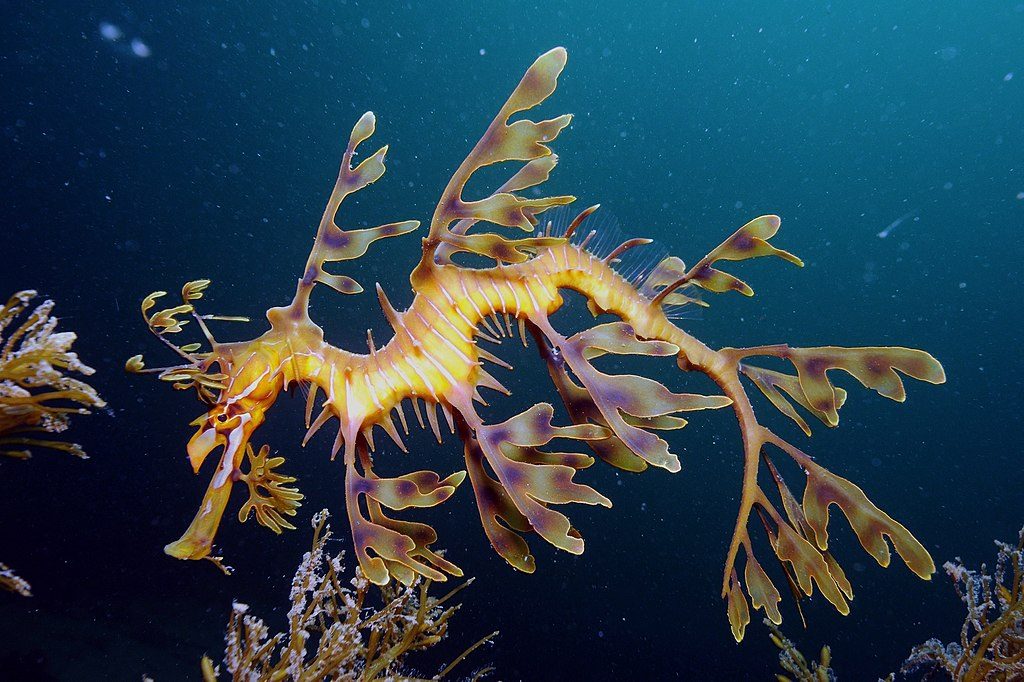
Photo by James Rosindell
Is that some sort of miniature kelp? No, it’s just a leafy seadragon, a marine animal related to the seahorse and pipefish. This is no fire-breathing creature; the name is derived from the leaf-like protrusions found all over its small body. The lobes of skin provide camouflage so that potential predators think the leafy seadragon is just some unappetizing seaweed. Plus, it can also change color to blend in.
After breeding, the female produces up to 250 eggs which are then deposited into the male’s tail, where they remain until they hatch. Once born, the baby seadragons are completely independent, feeding on small zooplankton until large enough to eat mysids. The leafy seadragon is a protected species in different regions of Australia and the official marine emblem of the state of South Australia. Unfortunately, these weird sea creatures are subject to a number of threats, from natural predators to human activity.
7. Venus Flytrap Sea Anemone
Scientific name: Actinoscyphia aurelia
Size: Varies greatly; from a few cm/inches to about 30 cm/1 foot long
Where to find it: Deep-water canyons in the Gulf of Mexico, upwelling areas off the coast of West Africa, and American Samoa in the Pacific Ocean at depths between 300-1,500 meters/1,500-5,000 feet
Unlike its terrestrial namesake, the Venus flytrap sea anemone is an animal and not a plant. It’s actually a relative of the jellyfish in the phylum Cnidaria. This deep-sea flytrap is a passive suspension feeder that waits for food to drift into its nematocyst-lined tentacles. Due to the lack of food options at such great depths, it’s more of a detritivore rather than a carnivore. Its tentacles are not only used to capture prey but also to protect itself when in danger.
The Venus flytrap sea anemones are usually considered sessile, but that’s not the case for every individual. They’re unusual among anemones because they are not anchored to the substrate and get swept away by the underwater currents. The Venus flytrap sea anemone lives on rocks, debris, shipwrecks, and even sessile invertebrates. These adaptable creatures, although rare, thrive in favorable conditions.
8. Tasseled Wobbegong
Scientific name: Eucrossorhinus dasypogon
Size: 1.8 meters/5.9 feet long
Where to find it: Northern shore of Australia, throughout New Guinea and Indonesia in waters as deep as 50 meters/160 feet

Photo by Jon Hanson
The tasselled wobbegong looks like a carpet, acts like a carpet, and it’s even a member of the carpet shark family. To top it all off, it has a fringe! The animal has a wide head with numerous branching dermal lobes running from the snout to the pectoral fins. Its large mouth is positioned ahead of the eyes and contains three rows of teeth in the upper jaw and two rows of teeth in the lower jaw.
As with other weird sea creatures, it features a camouflage pattern that helps ambush its prey. And since it has a poor vision, it may see just about anything as prey. This carpet shark has a reputation for aggressive behavior, as some humans have been bitten when they accidentally got too close or purposefully teased them. Nonetheless, many divers have managed to approach the tasseled wobbegong without incident. It would be best to keep a safe distance, though.
9. Christmas Tree Worms
Scientific name: Spirobranchus giganteus
Size: 3.8 cm/1.5 inches long
Where to find it: Throughout the world’s tropical oceans, from the Caribbean to the Indo-Pacific in shallow water of 3-30 meters/10-100 feet
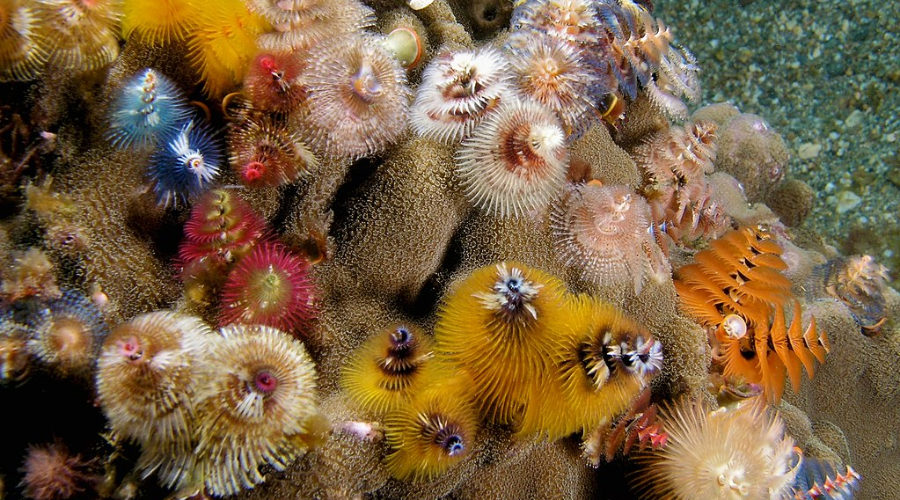
Photo by Nick Hobgood
Everyday is Christmas day when you dive near these tube-building polychaete worms. The animal’s segmented body is covered in chaetae, but its most distinctive features are the two so-called “crowns” that look just like a Christmas tree. Except these trees are not just decorations, they’re modified prostomial palps and help the worm filter and trap prey. And the crowns have yet another function – they harness oxygen.
The Christmas tree worms are inhabitants of coral reefs where they nestle their bodies against the living tissues of the corals. This forces the polyps to build around them, growing in length. But they don’t pick just any coral; scientists have discovered that some species of coral are favored, but they have yet to determine why. It may be because specific species help the Christmas tree worms with reproduction. Either way, they sure make great subjects for underwater photography.
10. Sea Pig
Scientific name: Scotoplanes
Size: 2-15 cm/0.7-6 inches long
Where to find it: Atlantic, Pacific, and Indian Oceans at depths of 1,200–5,000 meters/3,900-16,400 feet
They don’t oink and you won’t see them walking around on a farm, but these weird sea creatures do somewhat resemble a small piggy with their puffy legs and plump bodies. Sea pigs are abundant throughout the world, but they live in the abyssal depths of the ocean. These sea cucumbers are sometimes found in large gatherings. Bumping into hundreds of tiny marine pigs coating the ocean’s bottom would sure be quite a sight.
The little piggies have a peculiar body with five to seven pairs of tube feet, including some on the top of their bodies which resemble antennae. However, these are all hydraulically operated appendages that help propel the animals along the ocean and may also help them detect prey. And just like their terrestrial counterparts, they have a fondness for mud, scouring it to extract the organic particles they eat.
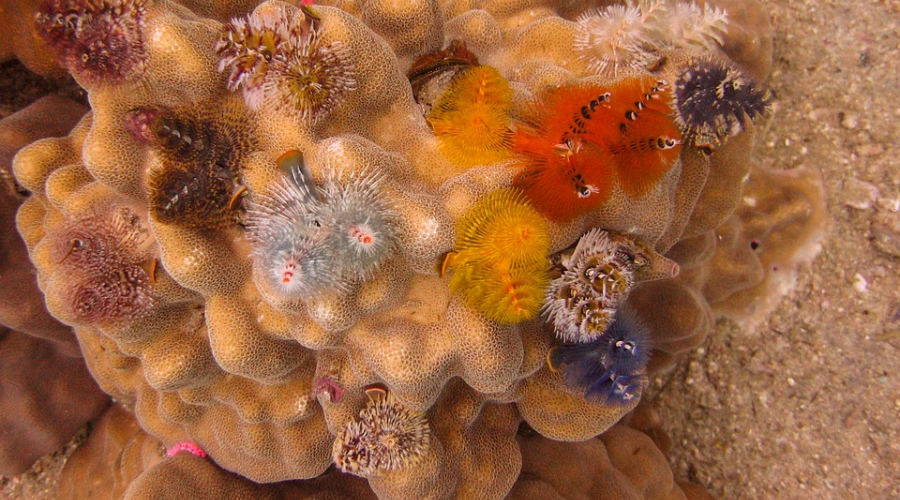
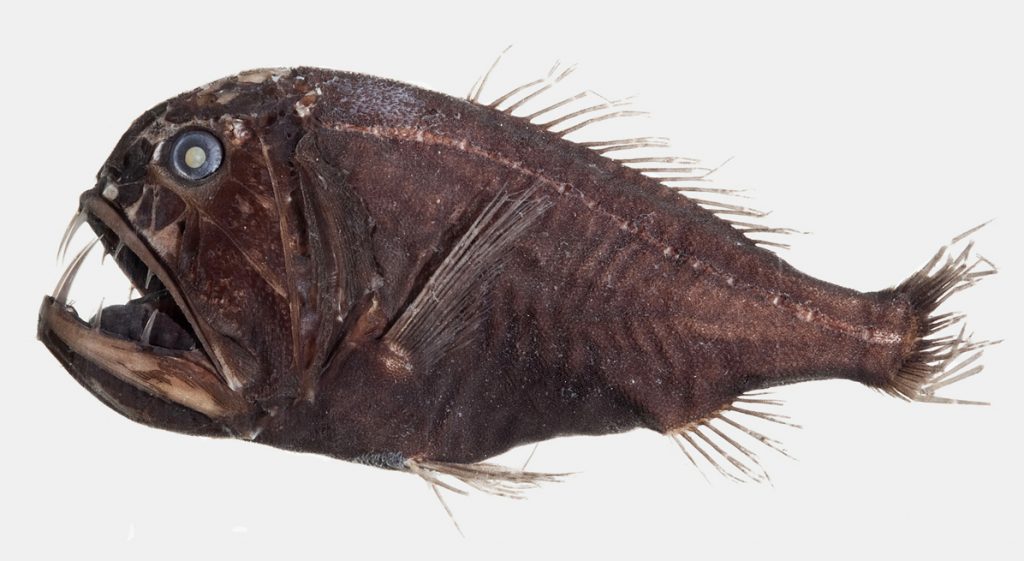
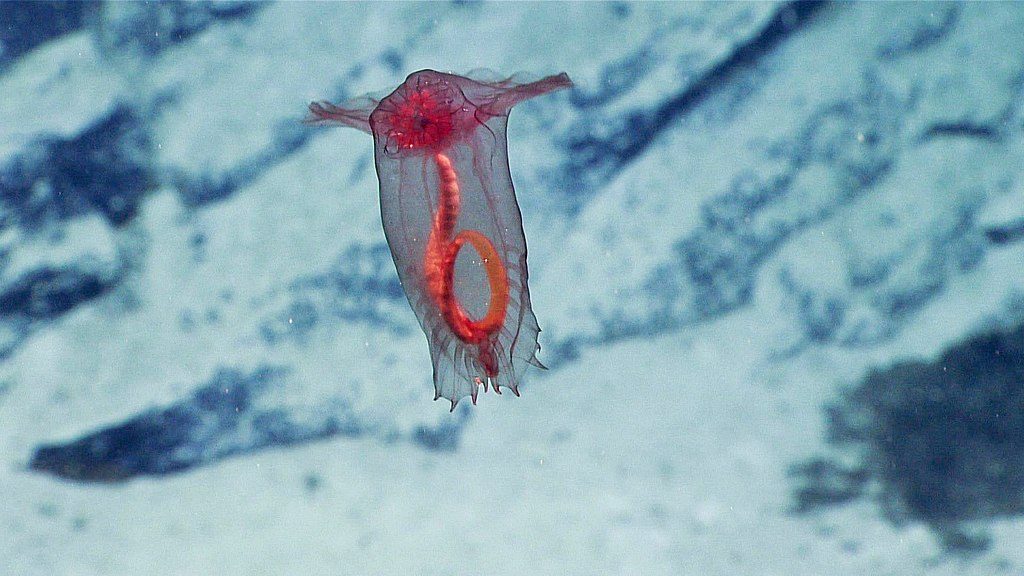
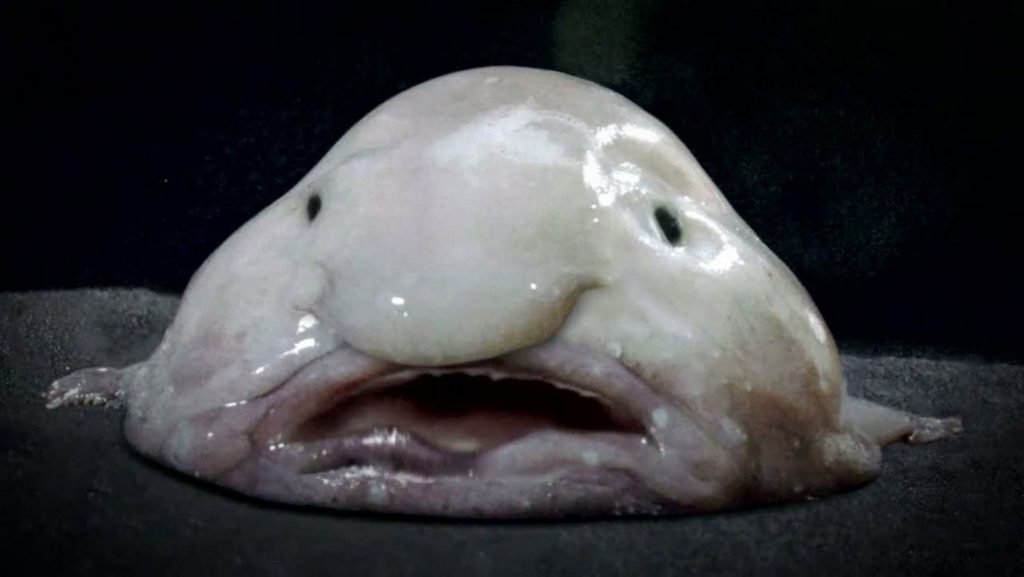


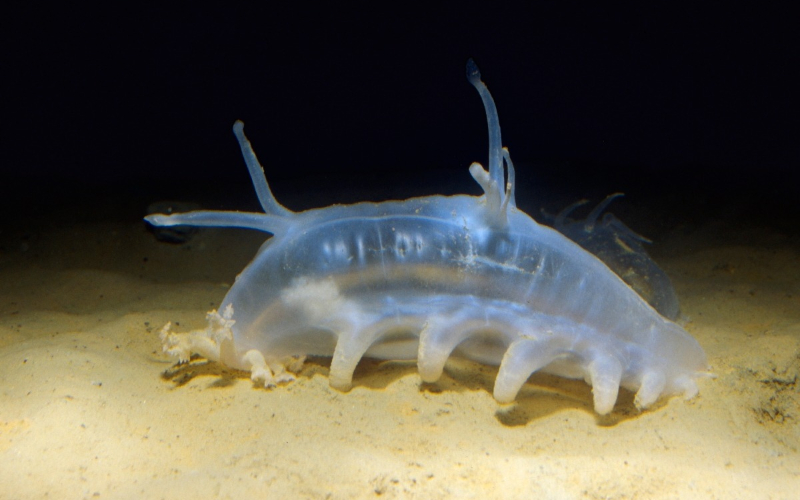
Seafari Yacht Charters says:
They are all unique sea creatures. This is the first time I have seen them, and I hope to see them in person. I am just curious about what they look like.
Seafari YC says:
It’s nice to reread this. I like the topic because I love beaches and water activities, of course!